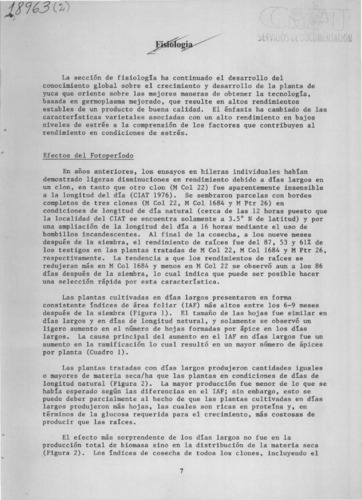Fisiologia
During 1981 the physiology section of CIAT's Cassava Program emphasized the understanding of factors that contribute to yield under stress conditions. Regarding photoperiodic effects, long days (16 h daylength) decreased HI and root yield while increasing total DM and the no. of apices/plant in clones M PTR 26, M Col 22, and M Col 1684. Soil water stress produced stomatal closure and reduced transpiration and leaf area. Plants under water stress formed larger leaves after being well watered (during recuperation). Leaf conductance was always greater in well-watered than in stressed plants at any given vapor pressure difference (VPD) and decreased rapidly as VDP increased. Max. water use efficiency is obtained at low leaf conductances and there is genetic variation among cv. in their response to VPD. Cassava is highly sensitive to changes in air humidity, which enables the cassava plant to reduce transpiration before it exhausts available soil water. Although cassava may be grown over a wide range of temp. since there are clones adapted physiologically to these temp., photosynthesis is considerably affected at temp. below 5-10 degrees Celsius. Cassavarecycles large amounts of N since the N content of fallen leaves is about half that of leaves on the plant. Tables and diagrams completing the information given are included. (CIAT)

